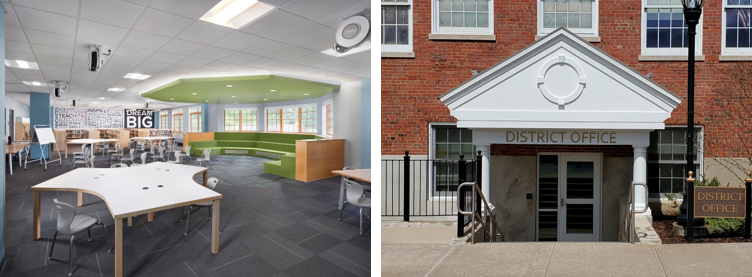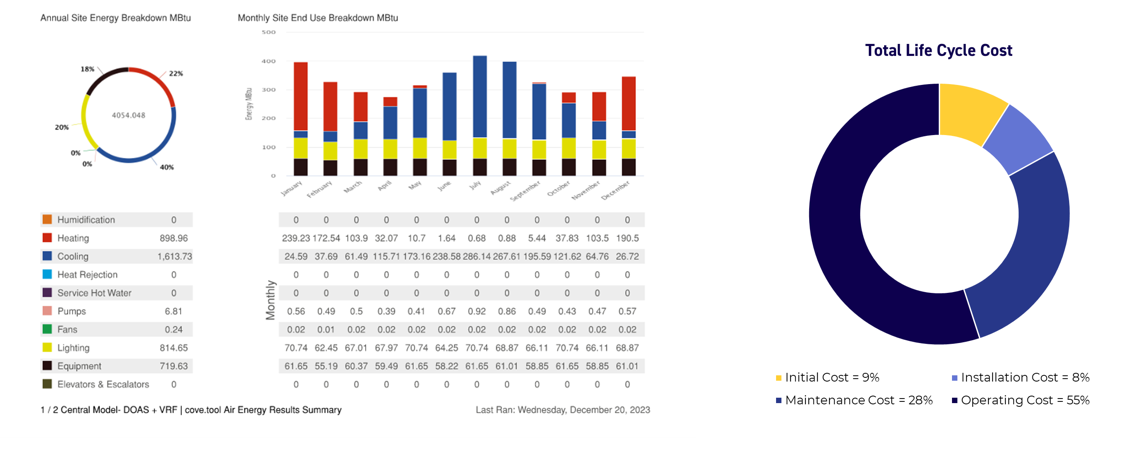Share This Story
The heat is on—literally. Across the country, rising temperatures are turning classrooms into stifling environments where students struggle to perform. A 2020 study found that for every 1°F above 70°F, test scores decline by 0.2%. And while 13,700 schools have added HVAC systems since 1970, many now require upgrades to meet emerging regulations.
For example, in New York, legislation mandates intervention when indoor temperatures reach 82°F, and students must be dismissed at 88°F if no alternative learning space is available. Other states, like California, are debating or enacting similar policies to address extreme heat at a broader scale.
Full AC installation isn’t always necessary, but districts must move quickly—whether through advanced ventilation, shading or phased implementation—to stay ahead. Delayed action risks costly emergency fixes, operational setbacks and penalties, so proactive planning is crucial to cultivate environments where students and educators can truly thrive.
The Hidden Toll of Sweltering Schools
Disrupted Learning & Adverse Health
Extreme heat impairs focus, causes fatigue and can lead to dehydration. Beyond physical wellness, it also affects workflows—attendance drops, and teacher unions may file grievances if temperature thresholds aren’t met. In some cases, schools are forced to close or shorten instructional hours, impeding learning continuity.
For districts already grappling with tight budgets and staffing obstacles, these interruptions can have ripple effects that hurt community stability.
Budgetary Hurdles & Lower Air Quality
Many older buildings weren’t designed for cooling and may not meet current codes. However, adding AC often requires extensive upgrades, including major electrical improvements. Renovations can also trigger extra compliance work, expanding a project’s scope.
Quick fixes—like window units—increase maintenance costs and introduce air quality issues. Instead, phased implementation can help districts align renovations with capital budgets, ensuring scalability for the future.

Variable Refrigerant Flow (VRF) systems were integrated throughout the Pleasantville Union Free School District in stages, improving cooling and heating efficiency and upholding affordability. The project also decreased the district’s carbon footprint with a fully electric HVAC system.
Space & Power Constraints
The shift to electrified HVACs can strain power grids and building distribution, especially in rural districts with minimal utility infrastructure. Urban schools, meanwhile, typically lack space for large-scale cooling systems, opting for workarounds such as compact rooftop units or hybrids.
3 Key Steps for Smarter HVAC Upgrades
1. Assess Your District’s Unique Needs
A comprehensive facility assessment is the first step in developing an effective HVAC strategy. Administrators should work with designers and engineers to:
- Audit infrastructure, determining whether simpler retrofits or full replacements are needed.
- Compare multiple upgrade scenarios to balance upfront costs with long-term viability.
- Stagger proposed projects to harmonize financial goals and any compliance deadlines.

Our team leverages design software to evaluate potential HVAC solutions; comparing annual energy consumption and lifecycle costs to help stakeholders make informed decisions.
2. Identify Tailored Solutions
There is no one-size-fits-all approach—but thoughtful system selection can help optimize costs and productivity through options including, but not limited to:
- Unit Ventilators: Compact, under-window units that merge ventilation with temperature control, making them suitable for older buildings with limited ductwork space.
- Variable Refrigerant Flow (VRF) Systems: A flexible, phased execution method that delivers zoned heating and cooling and reduces environmental impact.
- Chilled Beams: Lean, ceiling-mounted units with convective coils that minimize ductwork and enhance air circulation.
- Geothermal Systems: A long-term investment that leverages underground heat exchange to provide energy efficiency.
- Small Packaged Rooftop Units: When full-building modifications aren’t possible, these units can provide localized control for individual classrooms or building wings.
3. Pursue Funding & Energy Incentives
Though HVAC funding is often limited, incentives can help offset expenditures. For instance, NYSERDA’s FlexTech program can cover up to 100% of a feasibility study, allowing districts to explore options before committing to a final plan.
Schools considering geothermal or solar energy may also qualify for:
- Investment Tax Credits (ITC) under the Inflation Reduction Act.
- State energy efficiency grants tailored to school infrastructure upgrades.
- Utility company programs offering prescriptive equipment incentives or broader system energy savings support.
Engineering a More Resilient Future for the Next Generation
Extreme heat isn’t just a seasonal inconvenience, it’s an enduring infrastructure challenge that demands intention and forethought. Progressive districts are already taking action, embracing modern HVAC solutions to accommodate new laws and support both learning and operational excellence.
By conducting thorough analyses, coordinating phased planning and working with the right partner to secure funding, K-12 administrators can create forward-thinking environments that prioritize academic success and sustainability for years to come.
Grant-Funded AC Study for Your School
Rising classroom temperatures can impact student success. Is your district prepared?
Let CPL help you explore grant funding opportunities for an AC study—a smart first step toward creating healthier, more comfortable learning environments.
